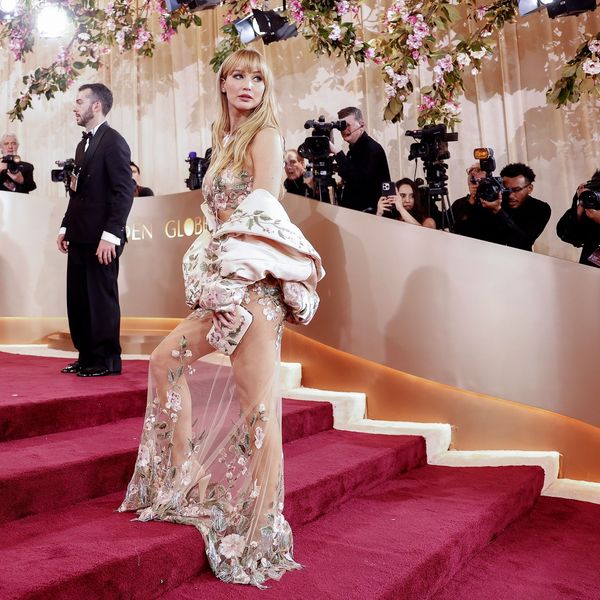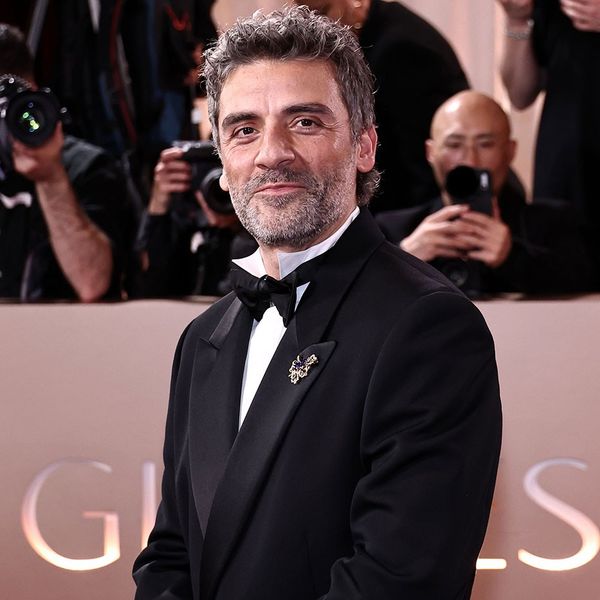Exploring Upside-Down Realms and Cosmic Superclusters with Multi-Disciplinary Artist Marcus Schaefer
See how this multi-hyphenate artist harnesses his subconscious.
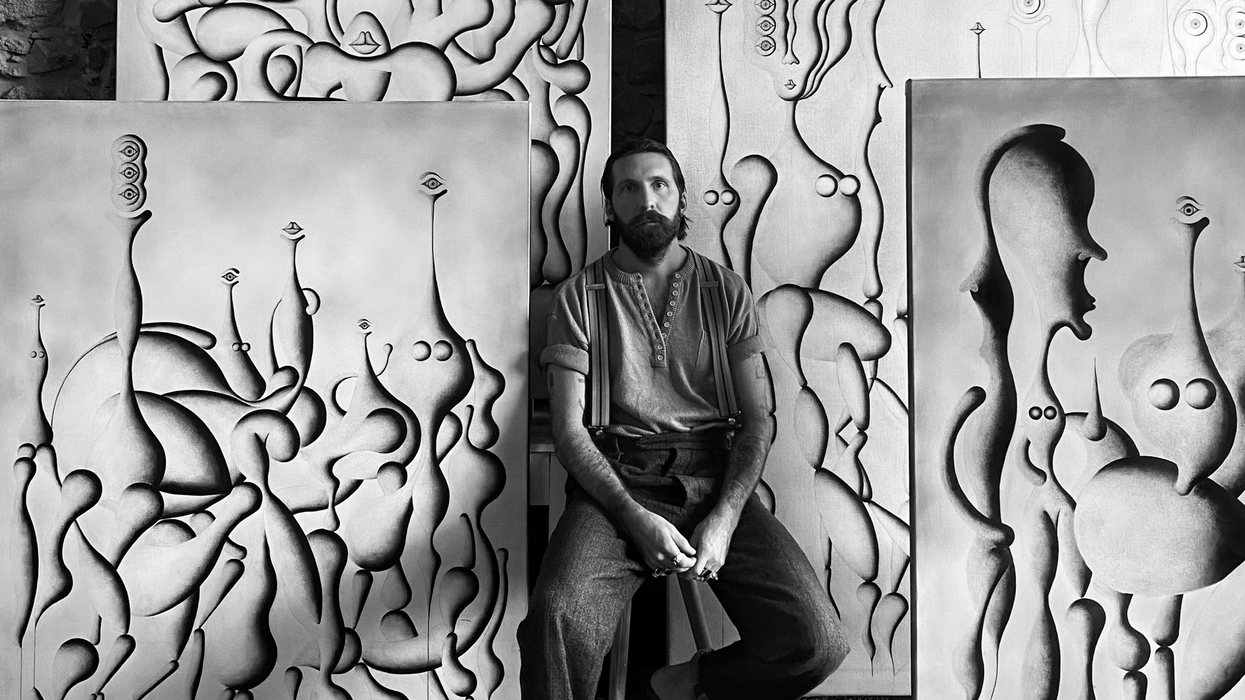
At first glance, Marcus Schaefer’s work is deceptively simple–predominately black and white, abstractly figurative, and employing recurrent motifs of human features and expressive curves. But each work contains a universe of possibility and contradiction for the multi-hyphenate Paris-based artist. Nostalgic yet futuristic; intergalactic yet human; psychedelic yet monochromatic. To Schaefer, these themes are not at odds because his work operates in the expansive space of the divine unknown.
As a modern Surrealist, artmaking is an outlet for his subconscious, a way of manifesting the understated emotional fabric that unites us all. To Schaefer, working in black and white opens a world of possibilities that the traditional ROYGBIV simply doesn’t offer. He effortlessly translates his practice across painting, sculpture, and photography, each medium lending a new dimension to his distinctive vision. From cosmic superclusters to LSD tests to the spectral aspects of photography, Schaefer takes us through the winding journey of his artistic practice and sources of inspiration.
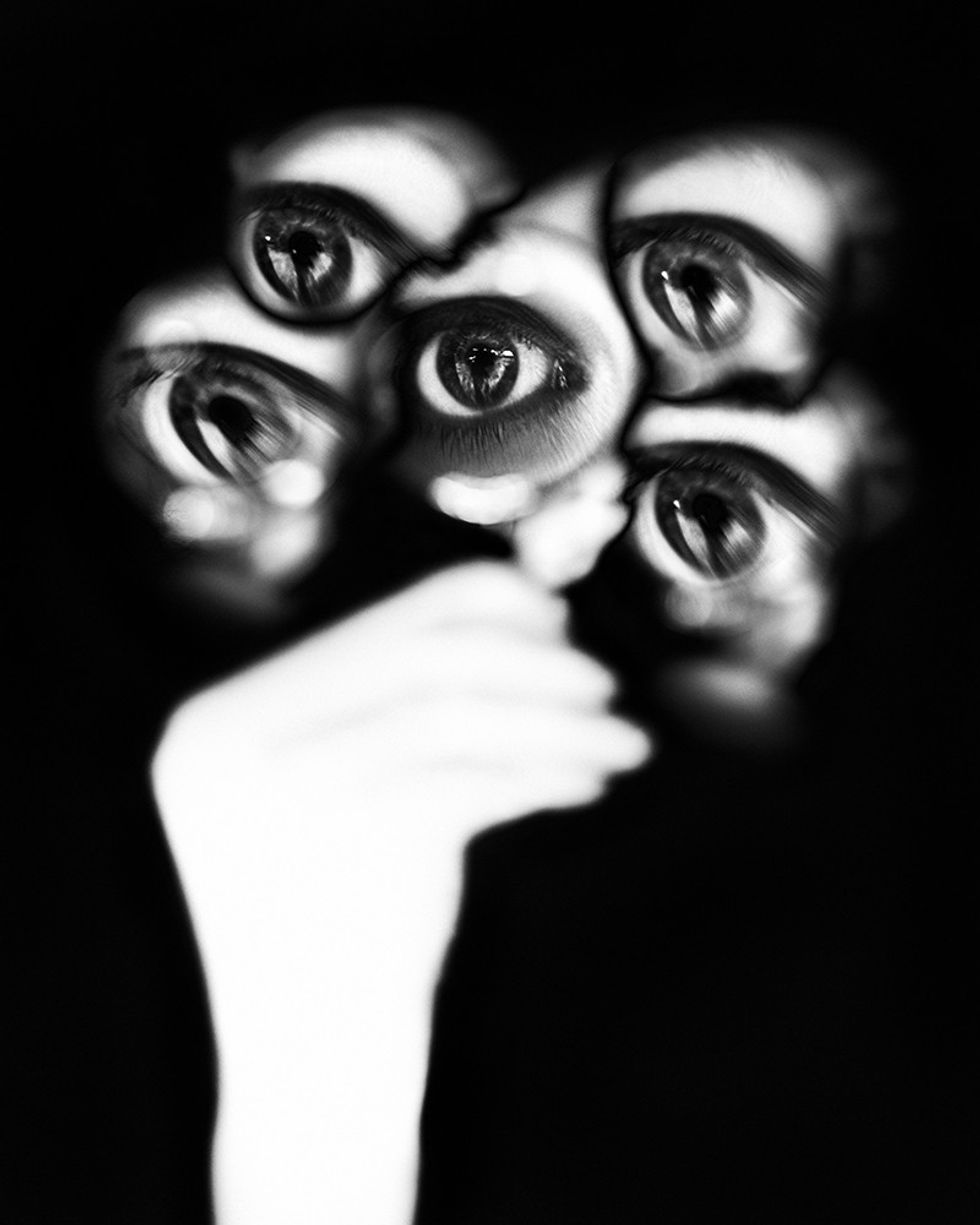
Augenstrauß 2018
Marcus Schaefer
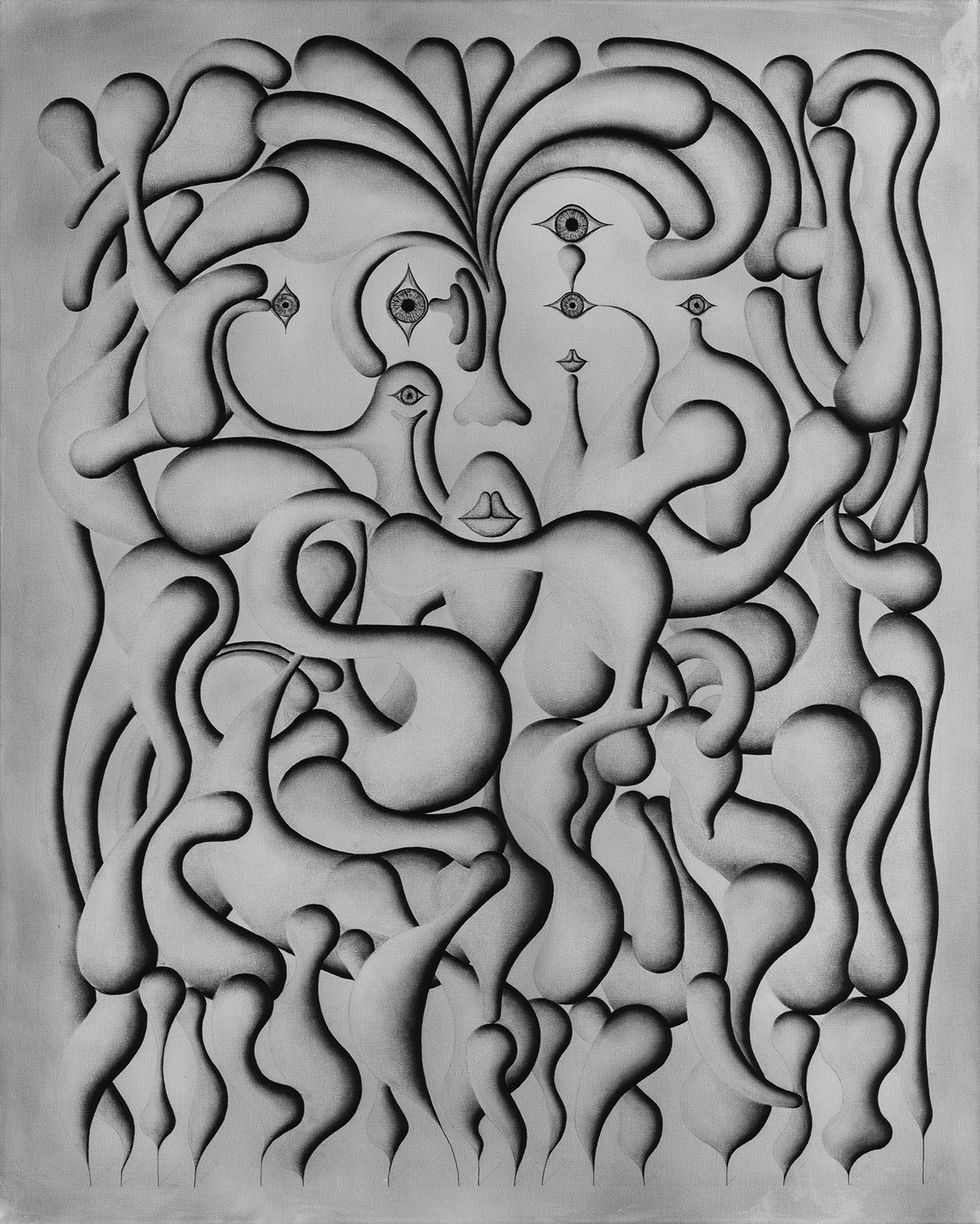
Bildnis eines Unbekannten, 2023, 120 x 150 cm, 47 1/4 x 55 1/8 in, Oil Pastel, Acrylic & Charcoal on Canvas
Marcus Schaefer
What was your first love: sculpture, painting, or photography?
“Photography was first, then drawing and painting. Sculpture is my latest obsession—I started about two years ago.”
Do you remember the first work of “art” that you made? (or the first thing you considered to be “art”)
“There are a bunch of early photographs that I produced when I just graduated from the Academy of Fashion and Design in 2013–where I studied journalism–that I consider to be my first pieces of fine art photography. Some really interesting surreal work that undoubtedly was already the beginning of my photographic path leading towards where I am now."
In your work, I see the recurring motif of surrealist figures–are these specific characters you repeat, or is it more about form and composition?
“Yes and no. At first glance, all my paintings depict scenes of abstract beings meeting at what I consider to be an intersection of realities–exploring identity, intimacy, vulnerability, and sensitivity. I want to visually create an emotional vacuum and a peaceful realm of coexistence. So yes, these figures are recurring but also evolve or shapeshift in a way that makes them representations of us. The forms and compositions are visually inspired by cosmic superclusters, which are the invisible framework of dark matter that keeps together galaxy clusters–the ‘glue’ of the endless universe. Metaphorically speaking, the beings in my paintings represent these superclusters and the universe being glued together by ‘dark matter.’ In our living reality, that glue would translate to social intelligence and sensitivity. In other words, we are ONE, which is a highly complex idea and not exactly elegantly practiced in our society.
“So, there is also an element in my work that references the complex relationship between being human and living in society. In my eyes, being human essentially means having your own reality, whereas living in a society means living in a determined reality fabricated by humans. That’s where it gets tricky because the whole idea of ‘my liberty ends where yours begins’ will always be violated by humans. In that sense, my works are nostalgic dreams of utopian worlds that don’t and will never exist. It’s a sad and beautiful thought, isn’t it?

British Vogue 2023
Marcus Schaefer

Der Kreislauf des Lebens, 2023, 120 x 150 cm, 47 1/4 x 55 1/8 in, Oil Pastel, Acrylic & Charcoal on Canvas
Marcus Schaefer
How is your work in conversation across each medium? Are these motifs a visual alphabet for your own artistic language?
“Drawing and painting help me understand my photographic path and take it to the next level–I see them as a kind of umbilical cord that connects these two worlds. I want to photograph what I can't paint, and I want to paint what I can't photograph, so my photographs are increasingly becoming a hybrid form of painting. Sculptures, in turn, allow me to transfer into the three-dimensional world and design figures of my imagination (usually characters from my paintings), in which only my rules apply. It's like being a child again; you can channel the energies of your dreams, giving them a magical, calm momentum and an oasis of rest. I love the variety and enjoy jumping back and forth between disciplines–one discipline fertilizes the others. I have now reached a point where I have to practice all art forms to keep my creative flow at a high level. The change prevents operational blindness and creative blocks. My works from different art forms live in symbiosis with each other and cannot exist without each other. They ultimately have the same goal, which is to refine my artistic identity more and more.”
Surrealism is quoted as aiming to “revolutionize the human experience,” do you agree with that definition? How does your work honor or expand on that idea?
“I completely agree! Surrealism, at its core, is based on the idea of psychic automatism, or the free association of thoughts, to explore the power of the unconscious. In a nutshell, according to scientists studying the subconscious–mostly using low doses of psychedelics like psilocybin mushrooms or LSD and such–is the key to understanding life and ‘revolutionizing the human experiences.’ There are many things we still don’t understand about our human existence and how our mind and the subconscious operate. However, creatives from all eras have described creative outpourings as coming out of nowhere, as if given by some ‘divine source.’ It’s as if there is a universal ‘creative energy source’ that one can tap into and harvest ideas. And yes, I do honor and expand on that idea–my work arises from a mixture of both the conscious and the subconscious, and I attempt to give the subconscious an ever larger and clearer outlet. The subconscious is the mysterious part, and the conscious is the purely technical or operational necessity.”
What are the freedoms and limitations of working in a monochromatic palette? When did you make this artistic shift/commitment?
“I personally don’t see any limitations of working in a monochromatic palette unless there is a commercial agenda when featuring a product that would have to be captured in its true color. Apart from commercial and editorial assignments, I committed to working almost entirely in black and white about four to five years ago. When I’m not on an assigned project, I am not interested at all in shooting the exact likeness of someone or something, I want to create my very own interpretation of what‘s in front of my camera. I long to arrest all beauty and the non-obvious, or at least capture the obvious in a non-obvious way. With that goal in mind, my first step away from so-called ‘reality’ was to leave the world of color since we don’t see the world in black and white. For me, the world of black and white is like entering an upside-down realm that is much more sensitive, abstract, and intimate than the world of color and opens up entirely new avenues of escape and expression.”
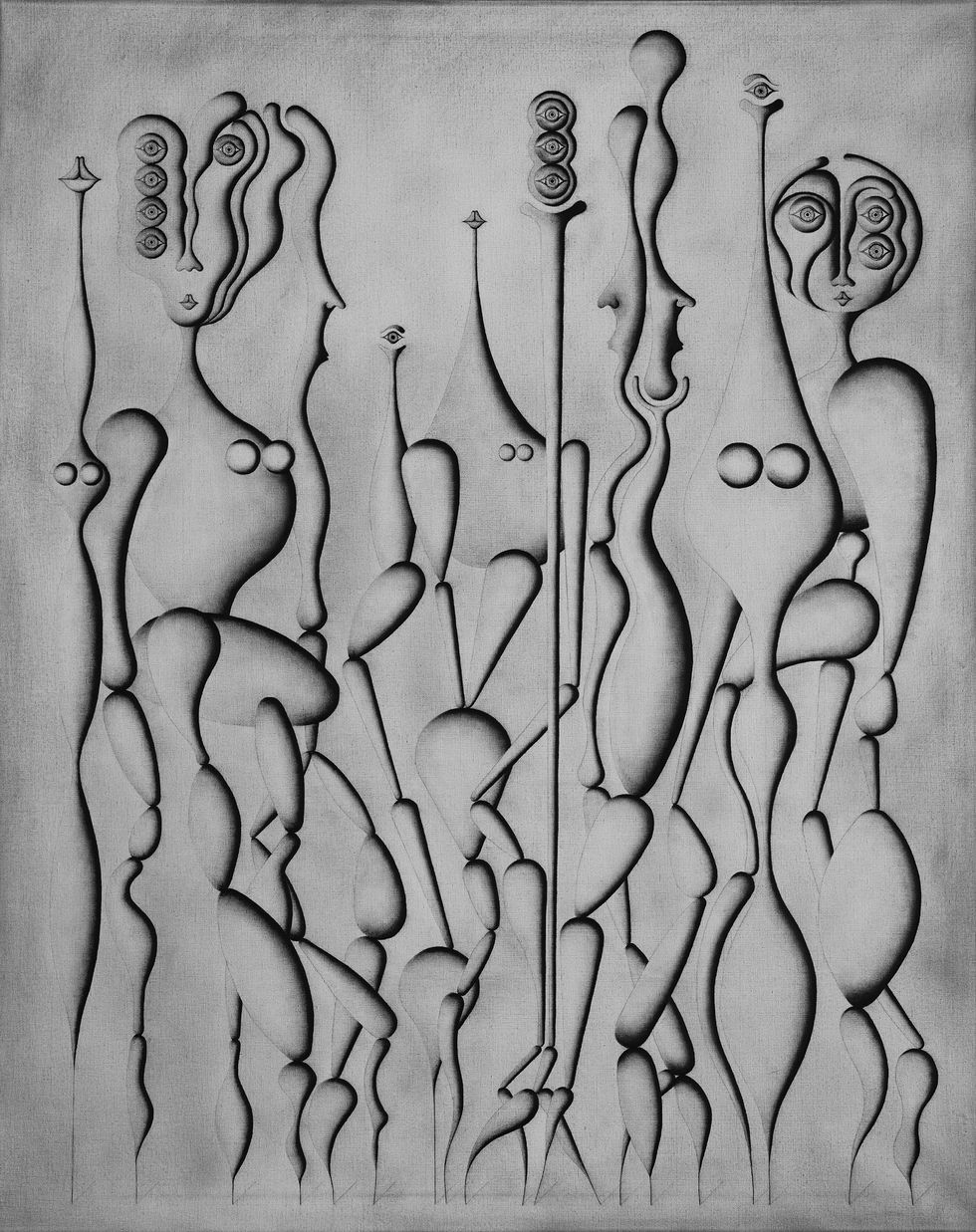
Die komplexe Mechanik der doch so fragilen Menschheit, 2023, 160 x 200 cm, 63 x 78 3/4 in, Oil Pastel, Acrylic & Charcoal on Canvas
Marcus Schaefer

Distorted Nude 2021
Marcus Schaefer
What influences were most formative in developing your personal style?
“One of the most significant elements of my style is that I put the color black at the heart of my work, and it becomes a central component of my visual messaging in all my creative endeavors. From a technical point of view, photography has a dark, absorbing element that evokes something between life and the afterlife. It makes my work quite dark, vulnerable, melancholic, and sensitive. By blurring outlines and modulating tones, I try to allow one form to merge into another and create a certain otherworldly mood. I seek that ‘in-between’ experience, and my surreal photographs are supposed to haunt us in the spectral space of the unseen. This effect is accentuated via arrangements, mirrors, distortions, long/multiple exposure/s, altered light levels, and some rather uncontrollable elements to create an interplay between fiction and reality. It’s never just a static reproduction of reality.”
How would you describe your personal style?
“The most formative influences in developing my personal style came from science. I love going down rabbit holes about the infinite universe, black holes, gravity, the beginning of life, or stories of ancient civilizations and megastructures. Beautiful black-and-white images of ancient digging sites in Egypt, South America, and elsewhere show ancient sculptures, relics, cultural events, craftsmanship, construction techniques, and technology. I question reality, the history of humanity, time, society, the digital age, consumerism, the idea of careers, ego… I question so many things, especially in modern times, because nothing seems pure and original anymore."
You’ve said your driving impulse in your work is to “capture your current state of mind”- how would you describe your creative process? What rituals or routines help you get into a flow state?
“My approach to photography can sometimes be quite contradictory because I create a controlled environment with a very clear idea of the outcome. Nevertheless, I believe errors in photography are a guarantor of unique imagery. The unplanned, accidental outcomes make a picture truly special and somewhat not ‘reproducible’ even though it is digital. Therefore, I think it‘s crucial to keep a certain ‘wiggle room’ and push for these unplanned, accidental outcomes in the process of creation. As mentioned earlier, over time, I refined my photographic approach to make my photographs almost a hybrid form of a painting. By blurring outlines and modulating tones, I allow one form to merge into another and create a certain otherworldly mood. I always aim for something more unique, using long exposure and unconventional lighting–as well as playing with proportions, dimensions, and perspectives–to capture an extraordinary shot with a timeless momentum and a painterly effect.”
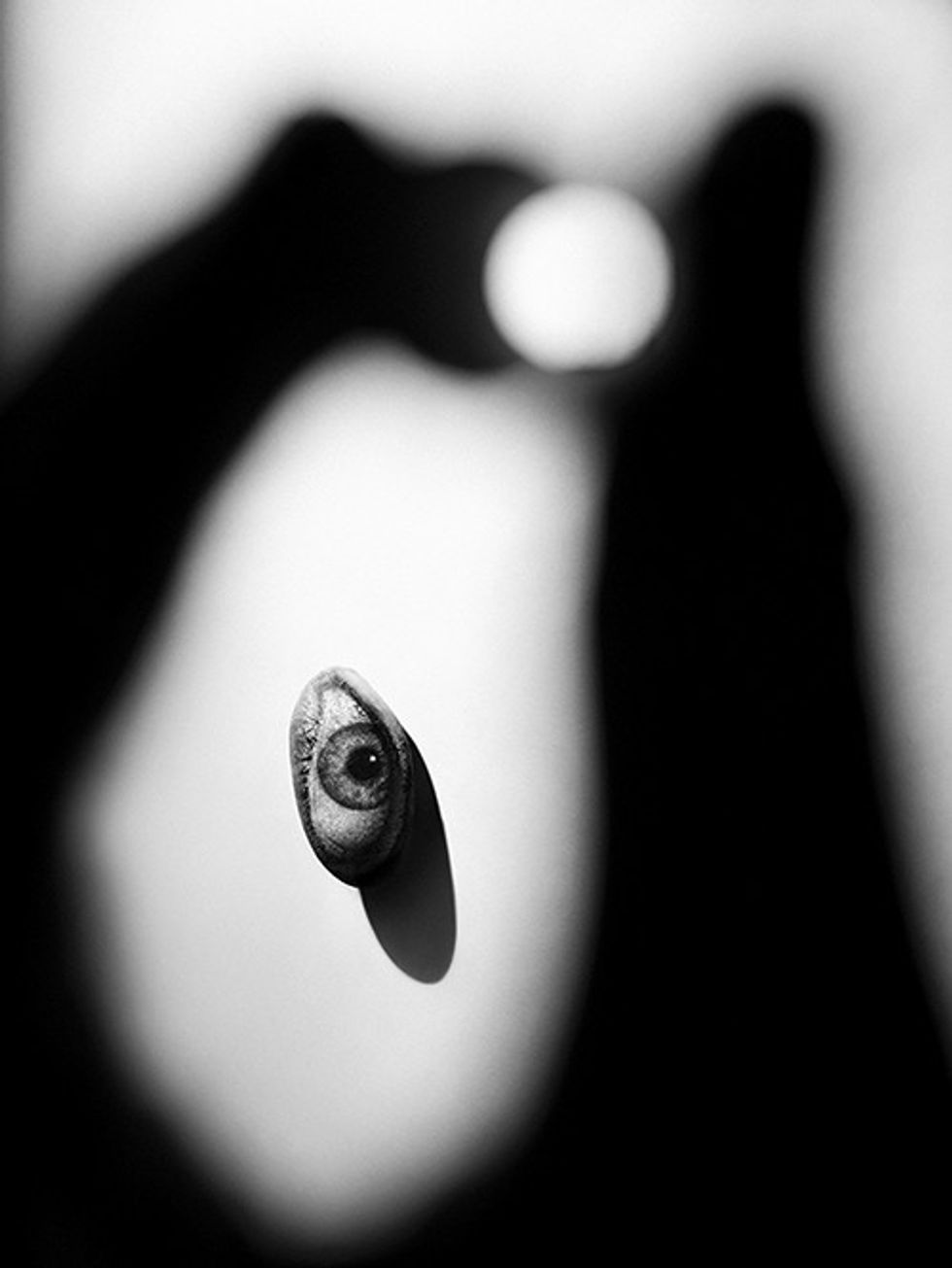
Eye & Shadow Hand 2019
Marcus Schaefer

Frau/Herr Quintero, 2023, 203 x 25 x 16 cm, 80 x 9 4/5 x 6 1/3 in, Plaster Stone, Iron Steel
Marcus Schaefer
You’ve said that photography is like a “time capsule” and “something between life and the afterlife”- do you feel sculpture and painting function in a similar way (capturing a moment in time/ feeling), or is there something more timeless and ephemeral?
“Yes, for sure! I’d go further and say that sculpture and painting capture moments in time and feelings in a far more complex manner. Artists turn their inside out, and it’s much harder to trace the sources. There are no clues, whereas photography has undeniable parameters that are still somehow tangible. I guess it makes them (sculpture and painting) more timeless, too, unless one tries to assign them to a specific era or context. Context is key and will change the observer's perception and classification of art objects enormously.”
Can photographs ever feel independent from time?
“Yes, photographs can absolutely feel independent from time. As often mentioned in previous interviews, photography is like a time capsule–it grants you the magical tool to go back and forth and can make the ‘now look like a timeless place in the void.”
What is the last work of art that made you swoon? (Film, music, photography, etc.)
“The true story behind the Coral Castle in Florida, which was solely built by a single man called Edward Leedskalnin. It’s such a mysterious and inspiring story that has made me swoon for years and probably will keep doing so.”
What projects are you currently working on? What inspired these works, and what are you looking forward to?
“I am currently working on a series of new paintings that focus on exploring the very ‘intersections of realities’ as described at the beginning of the interview, and I am looking forward to the experience of creating them.”
Rapid Fire Questions
What’s your guilty pleasure? 5 Guys.
Hidden talent? I am actually a really good soccer player.
Irrational fear? Fire in my atelier.
Desert island picks? My wife.
Something you used to hate but you love now? Cheese.
The best mistake you’ve made? Becoming an artist.
In a biopic about your life, who would play you? Christian Bale.
Who is your dream collaborator? Xavier Hufkens Gallery.
Best piece of advice you’ve ever received? Don’t cry that it’s over, smile that it happened.
The collected works of Marcus Schaefer are represented by Trunk Archive.


